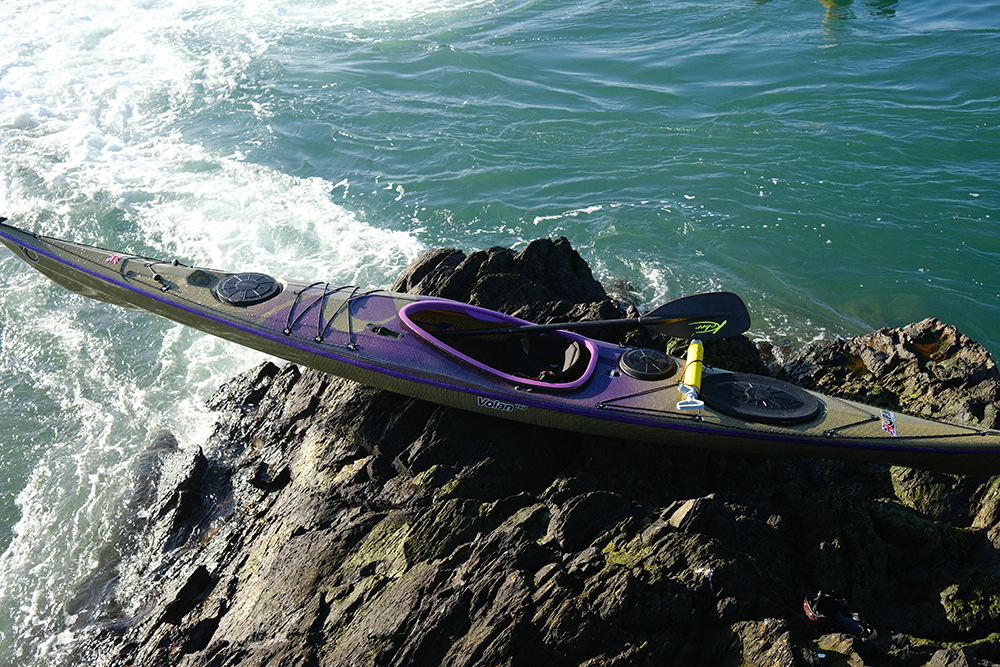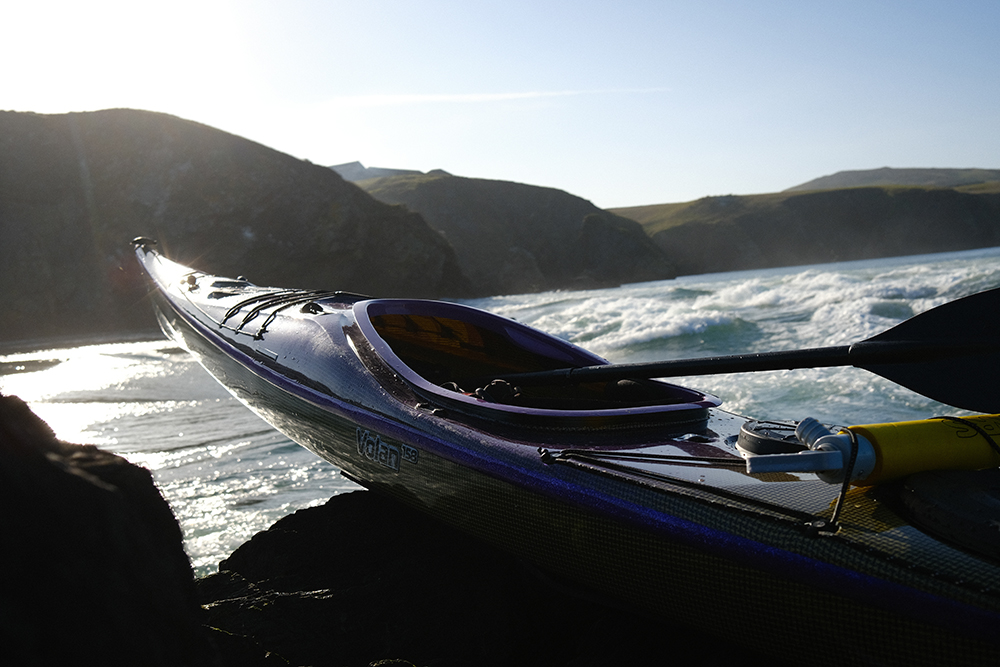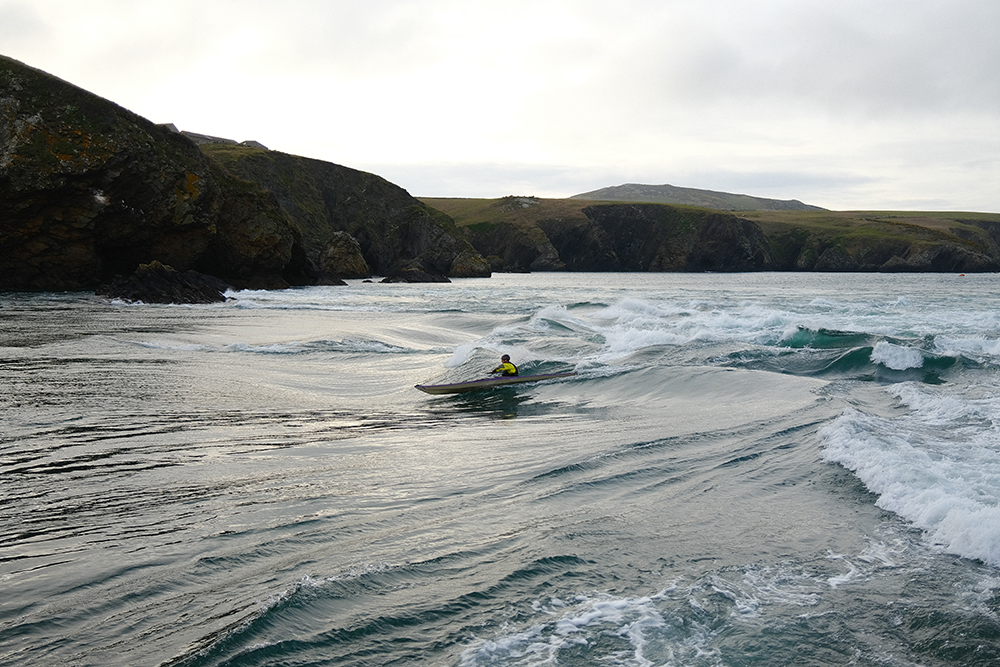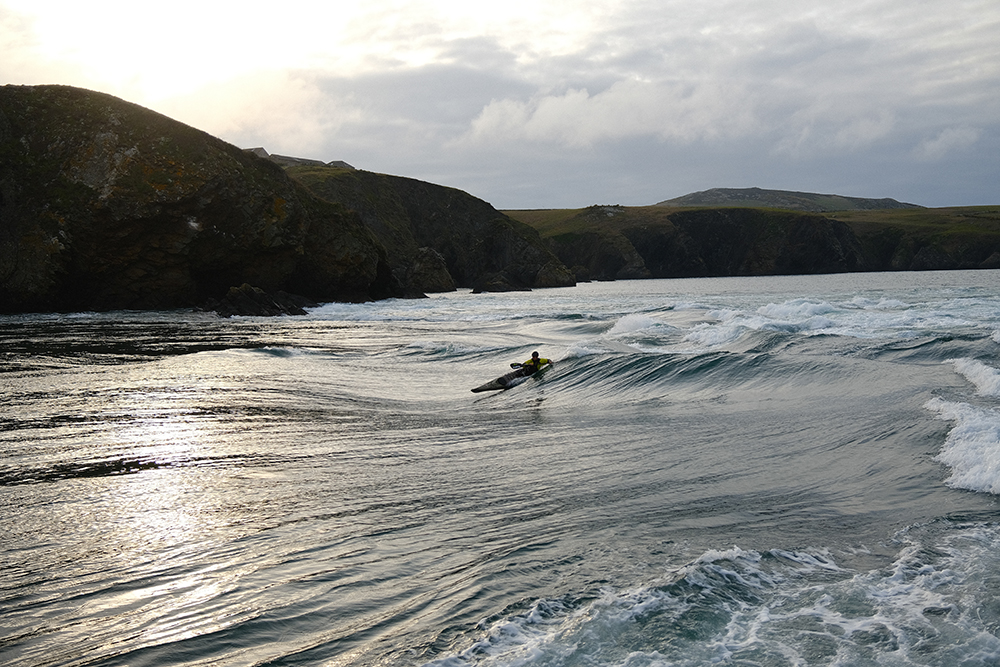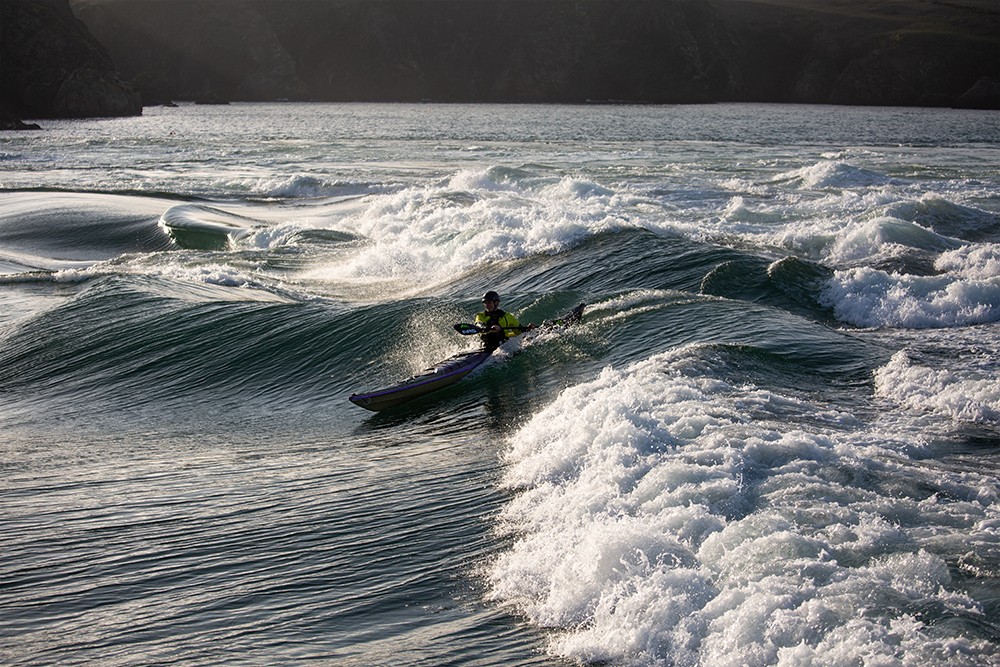As a proud owner of a Cetus, I have been on many sea kayaking adventures, exploring the outer Hebrides, the caves of South Wales, and the coastlines of Scandinavia as far north as Tromso in Norway. However, I always thought that a longer, expedition-style sea kayak was necessary for these types of trips – which I realise might be a common misconception. That is until I was told to check out the P&H Volan.
I have wanted to paddle a Volan since its release, and I was curious to see if a shorter kayak could still provide the speed I needed for group paddles and solo missions, while also offering more manoeuvrability for rock hopping and playing along the British coastline. So, when I had the opportunity to try out a demo of the Volan 158 in P&H’s new Ultralight layup, I jumped at the chance to steal it for a weekend.
The Expedition layup of my Cetus, complete with rudders and accessories, weighs around 26 kg. In contrast, this new Ultralight Volan, made of a kevlar/carbon weave with additional strengthening bands, weighed in at only 14.8kgs. It is truly a thing of beauty, and I was warned not to break it!
Despite being designed for touring in the fjords of Norway, lakes from Windermere to the Great Lakes in the USA, and the perfect conditions of the European continent and the Mediterranean, the weather and the tides don’t always tell the story you want to hear though, and the fun Spring tide conditions in Pembrokeshire were calling Gabi and I to make the trip to West Wales for the bank holiday weekend.
As someone who grew up as a slalom paddler, I have developed a strong appreciation for lightweight composite boats, while also learning to avoid rocks. Most slalom paddlers will remember the sound of the first time their composite boat connected with the rocks below, but most also remain true to their composite roots. I was amazed by how light the Volan felt when I picked it up, and in the right light, you could see the construction showing through, which served as a reminder that rocks are not our friends.
This education makes us all too aware that composite boats are not to be seal-launched or landed on rocks.
My first impression of this boat began the moment I picked it up to place it on the roof, but I knew that the real test was to come when we arrived in Pembrokeshire. The Bitches, a tidal race between St Davids and Ramsey Island, is well-known for its fast-moving water, complex eddy lines, and breaking waves and would also be a perfect testing ground to make sure the specification was strong enough to be a P&H Sea Kayak. The new Ultralight construction did not falter in these conditions, and it was an absolute joy to paddle. It cruised quickly up the coastline, ferrying across the flow, through the back eddies and paddling out of the whirlpool-like transitions between all the contrasting flows. The Volan’s manoeuvrability blew me away when I threw it on edge, where I am sure weight is a contributing factor, but not the only factor for this design excelling.
While there was a little more flex in the hull due to the reduced layers of fabric, this was only noticeable when I side-surfed a larger breaking wave on the back of the tidal race. Even then, there was no damage to report, but it’s worth noting that these are not the conditions that the Ultralight construction is designed for.
The P&H design team had a vision for this new construction, and I’m sure that it will be a hit among paddlers around the world. The single-person carrying and loading onto roofs are just some of the benefits, as the Ultralight layup is a game-changer on the water.
Whether you’re touring in the fjords or paddling on lakes in calmer conditions in this spec, or playing in the British coastline with a more hardy Expedition layup, the Volan’s versatility is evident in every stroke and it is firmly on my list as a boat to work towards.
All models of P&H Composite Sea Kayak are available to order in the Ultralight layup now, including the brand-new Composite Virgo!
